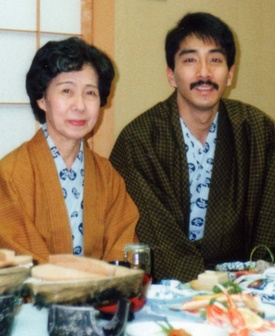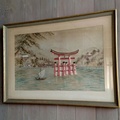
For years I have wanted to write about my family and ancestors to preserve stories of the struggles they faced as immigrants to the United States from Japan. But I kept putting it off, always assuming that there would be lots of time for that later in my life, especially after I had retired. Then, my father passed away in 2009, followed a few years later by my mother. Their deaths left me bereft, and as I struggled with grief I promised myself that the essence of their lives—who they were, the fears they had, the obstacles they had overcome, the joys they experienced—would not die with them.
I would finally stop procrastinating and begin writing to preserve my family’s history for future generations. In particular, I wanted to document the traumatic events suffered by my mother’s family during World War II, but in trying to learn about that painful period I ran up against a formidable obstacle: a wall of deception consisting of three layers.
The first layer I encountered was expected. I had long known of the U.S. government’s lies about the forced relocation and mass incarceration of 120,000 people of Japanese ancestry, most of them U.S. citizens. The overall false pretense was that the imprisonment of those individuals like my mother’s family was necessary for security purposes.
But in my mother’s case, the U.S. government also lied when it shipped her and her family to Japan in September 1943, during the middle of the war. Their deportation was labelled a “repatriation,” even though my Nisei mother, who was born and raised in Hawaii, was a U.S. citizen and had never been to Japan.
I was also prepared for the second layer of deception: my mother’s shading of the truth, her white lies, and her flagrant omissions of crucial information about what happened to her and her family during WWII. As far back as I can remember, she minimized the entire sequence of events that had usurped her from a happy, idyllic childhood in Honolulu to a concentration camp in an Arkansas swampland, followed by a deportation to Iwakuni, the town next to Hiroshima, where she witnessed the atomic bombing of that city.
My early understanding of that tortuous family history was woefully incomplete, and the meager knowledge I did possess was severely understated, almost comically so. When I was a young boy, for instance, my mother mentioned to me that she had once been to a “relocation camp” in Arkansas, but she said it so offhandedly that I had no idea what she actually meant. I probably thought she swam in a pristine lake there, had water-balloon fights, and toasted marshmallows by a fire.
Even much later she continued to shrug off the harrowing disruption to her teenage years—she was 16 when she was sent to Arkansas—but as an adult I intuitively knew that what had happened to her was far worse than what she let on because she simply wouldn’t talk about that period of her young life. It was only much, much later, when she was in her early 80s and dementia was beginning to impair her mind, that those distressing memories would surface and she would finally allow herself to tell me things she had never spoken of before.
I have now come to realize that my mother’s repression of that traumatic period in her life was not only a manifestation of her spirit of gaman, it was also her expression of her love for her children. She did not want my brothers and me to grow up to be bitter, angry men, and she wanted to protect us from the hateful ugliness of racism that she had endured so she swallowed all her WWII suffering deep inside her.
Unlike the first two layers of deception, I was utterly unprepared for the third layer: my grandparents’ falsehoods. As I dug deeper into my family’s history, I became aware that, not only did my mother distort the truth to protect me, so did her parents similarly lie to protect her from the ugly facts of the events that unfolded.
After being incarcerated in Arkansas, my mother’s family was shipped to Japan in exchange for U.S. citizens who had been stranded in Japan, China, and other parts of Asia when WWII broke out. The brutal reality was this: my mother, a U.S. citizen by birth, was exchanged for another U.S. citizen of a lighter skin.
In recounting what must have been an excruciating episode of her young life, my mother said that my Issei grandfather had wanted to return to Japan (or at least that is what he had told her). I have doubts about that version of events, and this is what I know from much archival research. After Japan attacked Pearl Harbor, my grandfather was rounded up from the family’s home in Honolulu and sent to a detention center on Sand Island in Honolulu Harbor, and from there he was shipped to a series of different facilities on the mainland: Camp McCoy in Wisconsin, Camp Forrest in Tennessee, Camp Livingston in Louisiana, and finally a Dept. of Justice prison in Santa Fe, New Mexico.
Meanwhile, his family was relocated to Arkansas, where my grandmother’s health began to deteriorate. My grandmother was a slight, frail woman, and she had much difficulty adjusting to the cold Arkansas winters and harsh conditions in a concentration camp. Lacking the strength or wherewithal to be a single parent to seven children in a strange, hostile environment, she wrote to the authorities in D.C. begging to be reunited with her husband. The family was told that they could be reunited if they agreed to be shipped to Japan.
I have no doubt that my grandfather was interrogated multiple times during his incarceration at the various Army facilities and DOJ prison. And I have no doubt that, somewhere during that time, he agreed to be sent to Japan. But I don’t know how truly voluntary that decision was. I’ve heard stories of Issei men in the Santa Fe prison being asked repeatedly whether they wanted to be repatriated. And surely my grandmother’s failing health in Arkansas must have weighed heavily on his mind.
Unfortunately, I don’t have any records of whatever interrogations might have taken place while my grandfather was being shuttled from the different facilities. After filing repeated requests under the Freedom of Information Act, I was informed by the Dept. of Justice that whatever records that might have existed of whatever interrogations that may have occurred would have been destroyed in the late 1970s.
So, in searching for the truth, I’ve been left to navigate through the three layers of deception, and here is my best guess of what actually occurred. I do believe that my grandfather did agree to be repatriated to Japan but that the decision was made under considerable duress. Later, he would tell his family that he had willingly made that decision, that he had indeed wanted to return to Japan. (My grandfather was a very proud man and this would have been his way to save face, sparing him from having to admit to his family—and to himself—that he had essentially become a powerless pawn of the U.S. government.) My grandparents perpetuated that lie to protect their children, and that falsehood was repeated by my mother.
When I once asked her whether Grandpa was ever bitter about what had happened during WWII—the government had seized his small department store and considerable property in a neighborhood just on the outskirts of downtown Honolulu—she simply replied, “Shikata ga nai” (it can’t be helped). It was as if all that loss and suffering had been caused by a natural event like an earthquake or tsunami, instead of by unchecked wartime hysteria that had devastated so many innocent lives.
To this day, I can’t say whether my mother knowingly perpetuated the falsehoods told to her by her parents. She might have done so because it was the easy, convenient thing to do. Or it’s quite possible she actually believed her parents’ fabrications. What I do know for certain is that both my grandparents and parents lived strongly by the saying, “Kodomo no tame ni” (for the sake of the children). To protect their offspring, they would do whatever they had to, and say whatever they needed to. I can’t help but be deeply moved by their unwavering love and devotion, but at times it has made those triple layers of deception all the more difficult to pierce.
© 2023 Alden M. Hayashi





